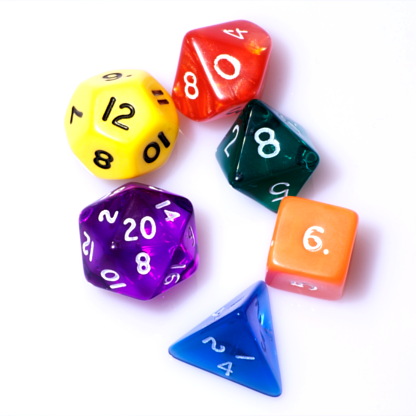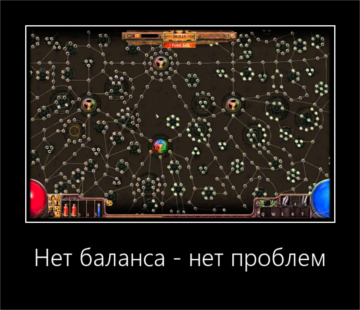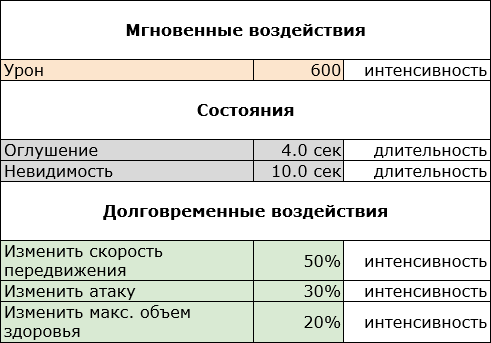Balancing game mechanics
 In the game industry, the user, as a rule, receives a finished product, but on the condition that the composition of the “candy” will always be hidden. You can twist the candy in your hands to hear the rustle of the wrapper. Or put it on the table and get aesthetic pleasure from the combination of colorful patterns on a candy with the color of a nearby cup. But no matter what the user does with this candy, he will not be able to try, perhaps not always sweet, but the real taste of the filling.
In the game industry, the user, as a rule, receives a finished product, but on the condition that the composition of the “candy” will always be hidden. You can twist the candy in your hands to hear the rustle of the wrapper. Or put it on the table and get aesthetic pleasure from the combination of colorful patterns on a candy with the color of a nearby cup. But no matter what the user does with this candy, he will not be able to try, perhaps not always sweet, but the real taste of the filling. On the expanses of Runet, you can find a lot of worthy information on how to properly pack products and what color the patterns should be. But I want to give you a taste of the candy itself.
Talk about balance in games. For example, we wanted to create an unpretentious RPGMMO shechka “WoW killer”, and we are almost done, we have already imagined what kind of cool battle mechanics and skill system will be in the game. The only thing left is to turn abstract thoughts into concrete meanings. Moreover, in some way, the combination of these values should convince the user that the phrase “balance - shit” absolutely cannot be a descriptive characteristic of our mechanics. I dare to give my interpretation - "How to do it!".
Impacts
Game interactions, if you do not go into details much, are a set of parameters that change their values under the influence of any phenomena (entities). If one object has the “Damage” parameter, and the other object has the “Health” parameter, then we can create the game process “The object attacks another object” and as a result, the Health parameter changes its value to the value of the “Damage” parameter.
Thus, it turns out that the impact (in this example, the effect of damage on health) is the reason for changing the parameters of the object. For a deeper understanding, let's try to classify the effects. They are instantaneous or temporary:
- Instant impact changes the value of the parameter immediately and irrevocably;
- The temporary effect changes the value of the parameter only temporarily, and at the end of its action returns the normal value of the parameter;
Surely this article attracted mainly playing people, which means you hear such terms as buff, debuff, dot, hot, etc. In different games, these terms may take other names (gifts, curses), but the essence remains the same - a certain long-term entity that changes the parameters of the characters during its time of action.
Summarizing the entities, we call them effects.
Using effects, interactions between game parameters are created. From the interactions formed game mechanics. And the mechanics control the gameplay.
An effect is a “container” for impacts. This “container” may contain both instantaneous and temporary effects:
- Instant actions are called periodically by timer (example: deal damage every n seconds);
- Temporary effects change the parameter during the effect;
An important characteristic of exposure is intensity. In simple terms, intensity is the amount by which we change the parameter. The effect also has a duration that determines the lifetime of the effect. Together, these two characteristics determine how significant the effect is for the player (balanced).
By increasing the duration time or intensity value, we enhance the effect. It follows that on an intuitive level (and on a practical one too), the significance of the effect can remain the same if the duration and intensity are changed in different directions at the same time (for example: increase the intensity and decrease the duration). We will call this axiom "Rule of balance No. 1" .
So we come to the first problem of balance - to find the value of duration and intensity for each effect, so that at least the mathematical formulas create the illusion of balance, not to mention the perception by living players.
States
There is a separate type of effect - state.
If an effect changes the set of characteristics of an object and gives it new properties (example: invisibility, immobility, stunning, etc.), then this effect is called a state. Intensity, as a characteristic, is absent in the effects of the state.
Balancing effects

In attempts to find the relationship between the two characteristics of the effect (intensity and duration) such that the effect is considered “balanced”, we can come to an infinite number of options that satisfy balance rule No. 1. To do this, you can increase one parameter (for example: intensity) and decrease another (for example: duration):
- Slow down the target by 50% for 5.0 seconds;
- Slow down the target by 60% for 4.0 seconds;
- Slow the target by 70% for 3.0 seconds;
- Slow down the target by 80% for 2.0 seconds;
On vskidku without details, we can assume that the options presented are equivalent (from case to case, the utility varies slightly).
But there are infinitely many such ratios of intensity and duration.
Reduce the number of ratios
You can solve the problem of endless options if you divide all the effects into 2 types:
- Variable only in duration (intensity is either absent or always constant);
- Variable only in intensity (duration is always constant);
Now we are allowed to change only one of the characteristics of the effect, and therefore, we can conditionally find the template values of the variable parameter for all effects.
What do template values mean? Imagine that there is such a ratio of the magnitude of the intensity of the effect that, with equal duration, the effects will be perceived by the players as equivalent. Fairy tale?
We compile a table where all possible influences (in our spherical vacuum game) receive one single value: variable in duration get the value of the template duration, and variable in intensity have always the specified duration and get the value of the template intensity.
Example table:

Any home begins with a foundation. So the balance should begin with it. This list is the foundation with us, which over time we will adjust to the reality and needs of the players.
Some conclusions can be drawn from the table. If we need to create a skill for a player and this skill must apply a “balanced” effect, then theoretically it does not matter which of the actions to choose, since they are equivalent (template). If they are not, then their template values must be corrected.
For the theoretical global balance, there is no difference whether the ability to deal damage of 600 units, stun for 4 seconds, or apply an effect that changes the attack by 30% for n seconds, since we created a table of template values and made an assumption about the equivalence of these values.
In the future, players will tell you what impact is assessed incorrectly in terms of balance. In this case, it will be necessary to change the value of one parameter in the table
This is where balance rule No. 2 appears - balance changes should be global, not point-like. Point and local changes create exceptions that lead to chaos in the system, and if the system is large enough, then chaos becomes uncontrollable and destructive.
To be continued…
